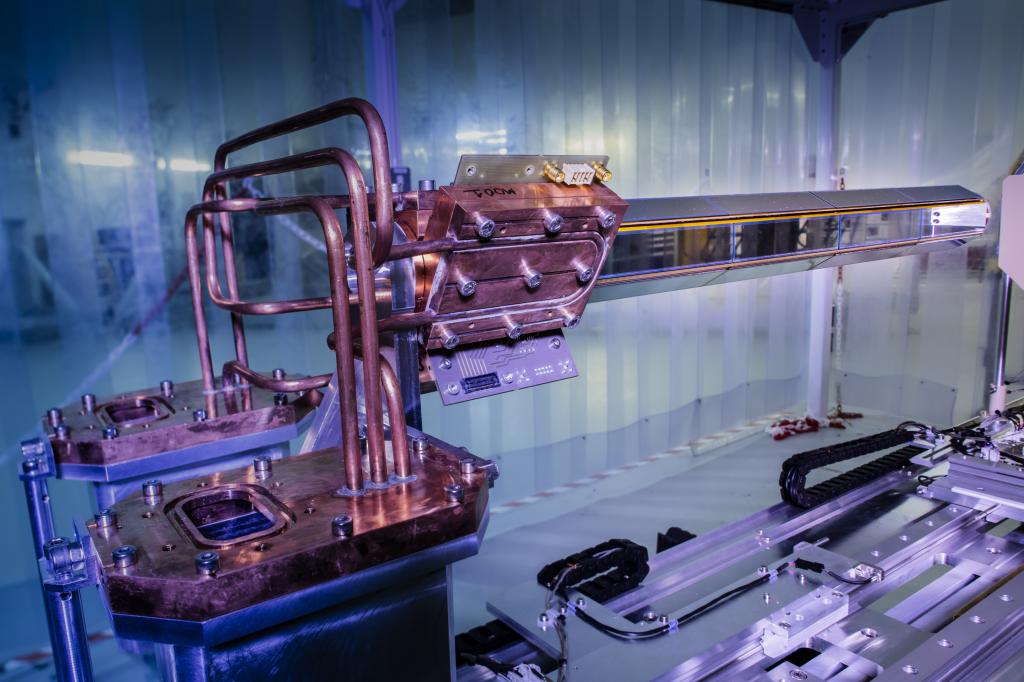The ISS has an advanced design that employs the proven HELIOS concept, whereby light charged particles emitted during the nuclear reactions are transported with high efficiency by the solenoidal magnetic field to an array of position-sensitive silicon detectors mounted on its axis. Measuring the particle energies and interaction positions in the silicon array allows the reaction Q-value to be determined without the problem of kinematic compression encountered in more conventional approaches.
The ISS array currently under development comprises 24 double-sided silicon strip detectors with ASIC readout and is designed to allow Q-value resolutions approaching 20 keV to be achieved. The full ISS array has now been delivered to CERN and is scheduled to be installed during the second long shutdown (LS2) and be available for physics exploitation thereafter.
Each side of the array features four DSSSD detectors, each with 128 x 0.95 mm pitch strips on the front (p-side) and 11 x 2mm pitch strips on the back (n-side). The hexagonal geometry is constructed from 3 individual modules of 8 detectors each, i.e. 2 sides of the hexagon. The p-side strips are paired across Si wafers within a given module (electrically bonded) and read out as a signal channel, which gives the "z" position of the interaction. The "x-y" position is determined from the 11 n-side strips, which are read out per wafer to individual channels. The radius of the array from beam axis to the surface of the Si is 30 mm.
The total solid angle coverage of the Si array is 94% in the theta angle and 70% in the azimuthal directions. The length of the active area of the detector in the z direction is 501.5 mm and the minimum distance to the target is 14.5 mm.

